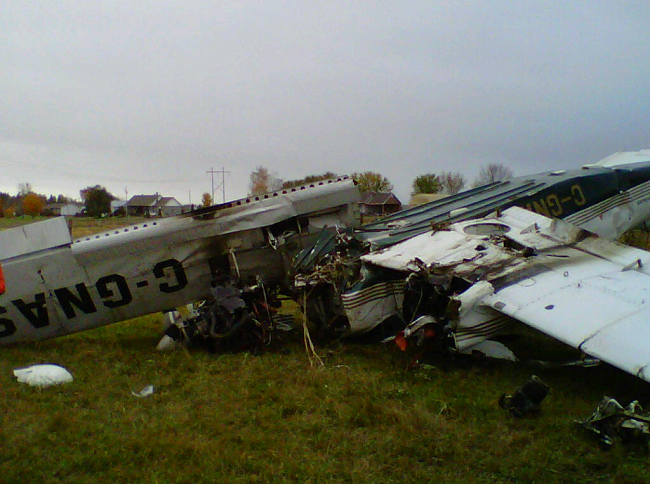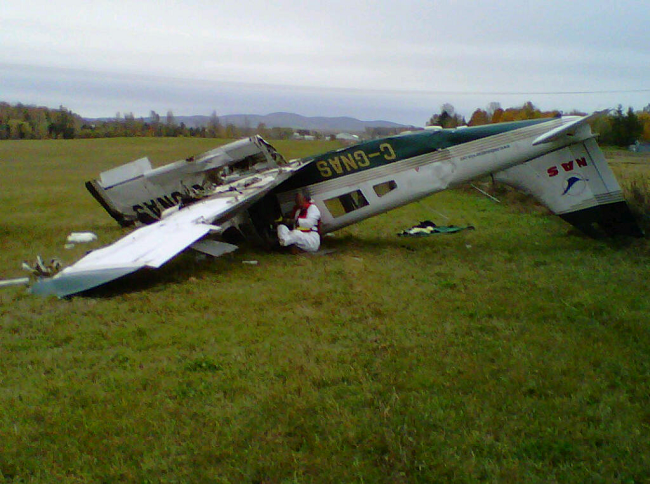In-flight engine fire leading to a forced landing
Piper PA-34-200, C-GNAS
Nadeau Air Service Inc.
Victoriaville, Quebec, 2 nm E
The occurrence
The Piper PA-34-200 (registration C-GNAS, serial number 34-7350133) departed from the Trois-Rivières Airport, Quebec, with 2 pilots on board for an instrument training flight. At 2100 feet, during a missed approach to the Victoriaville, Quebec, Airport, the right engine experienced a catastrophic failure and caught fire. At 1402 Eastern Daylight Time, the pilot in training declared an emergency due to the engine fire, and indicated his intention to land. During this time, dense smoke was spreading in the cockpit. The aircraft turned back and quickly descended in an attempt to land in a field located 2 nautical miles east of the Victoriaville Airport. The aircraft struck the ground and came to rest inverted. The 2 pilots were seriously injured. A bystander helped the occupants within minutes of the accident. The Victoriaville fire department arrived on the scene about 10 minutes later. The 406-MHz emergency locator transmitter activated on impact.
Media materials
Deployment notice
Transportation Safety Board of Canada deploys a team of investigators to an aircraft accident near Victoriaville Airport in the province of Quebec
Gatineau, Quebec, 15 October 2012 — The Transportation Safety Board of Canada (TSB) is deploying a team of investigators to the site of an accident involving a Piper Seneca (PA 34) aircraft that occurred near the Victoriaville Airport, in the province of Quebec. The TSB will gather information and assess the occurrence.
Investigation information
Download high-resolution photos from the TSB Flickr page.
Class of investigation
This is a class 3 investigation. These investigations analyze a small number of safety issues, and may result in recommendations. Class 3 investigations are generally completed within 450 days. For more information, see the Policy on Occurrence Classification.
TSB investigation process
There are 3 phases to a TSB investigation
- Field phase: a team of investigators examines the occurrence site and wreckage, interviews witnesses and collects pertinent information.
- Examination and analysis phase: the TSB reviews pertinent records, tests components of the wreckage in the lab, determines the sequence of events and identifies safety deficiencies. When safety deficiencies are suspected or confirmed, the TSB advises the appropriate authority without waiting until publication of the final report.
- Report phase: a confidential draft report is approved by the Board and sent to persons and corporations who are directly concerned by the report. They then have the opportunity to dispute or correct information they believe to be incorrect. The Board considers all representations before approving the final report, which is subsequently released to the public.
For more information, see our Investigation process page.
The TSB is an independent agency that investigates air, marine, pipeline, and rail transportation occurrences. Its sole aim is the advancement of transportation safety. It is not the function of the Board to assign fault or determine civil or criminal liability.

